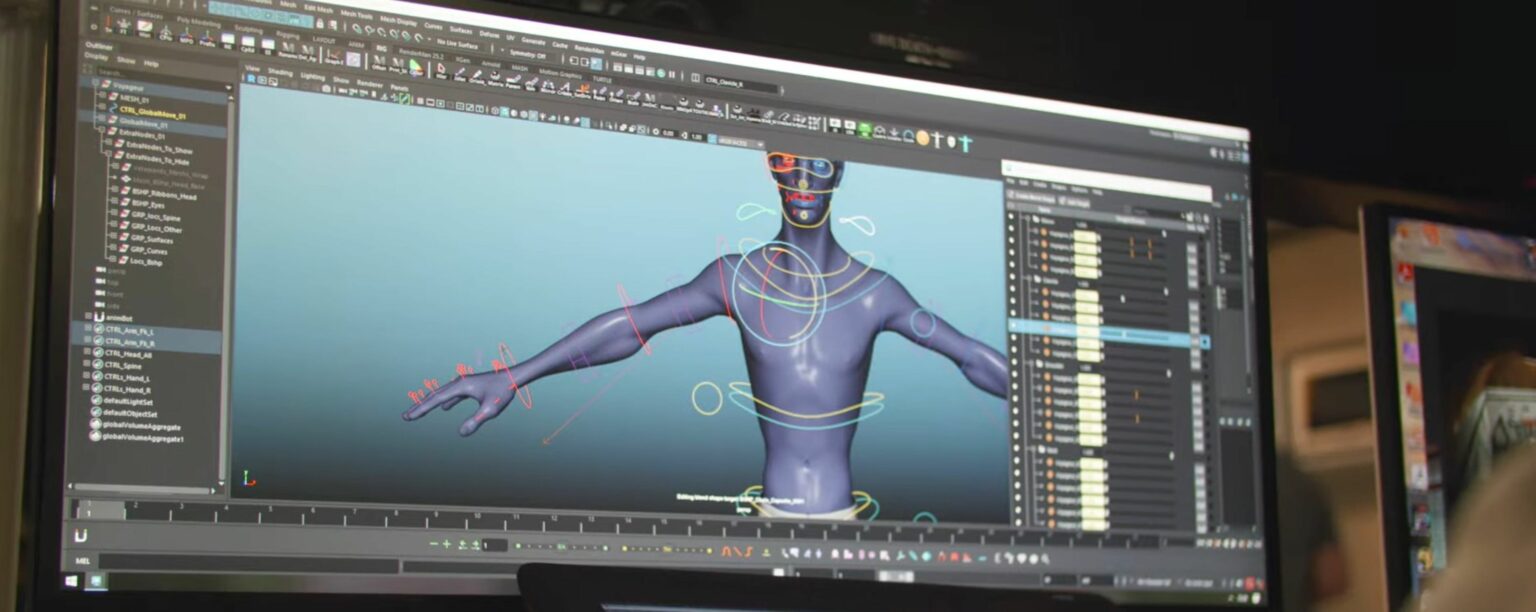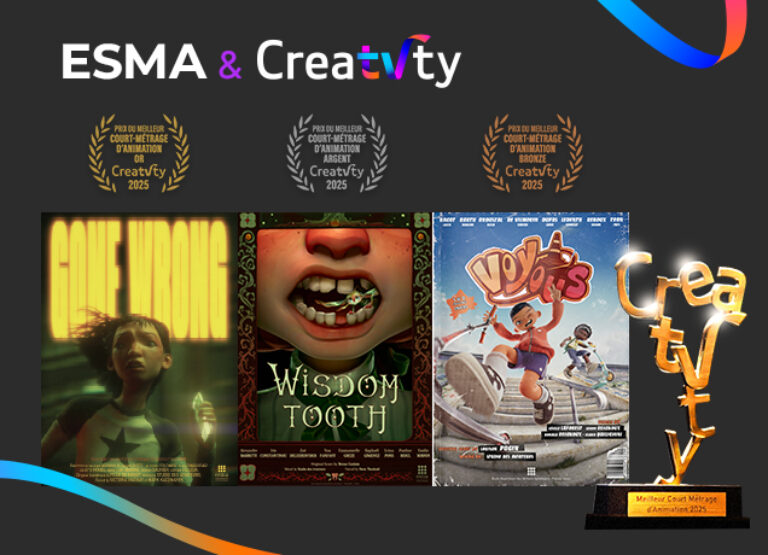
- Published 02.17.2025
- type Thematic news items
- Training 3D Animation & FX
Advancing in 3D animation means growing from junior to intermediate, then to senior animator. Each step comes with new expectations, responsibilities, and skills to master. If you’re just starting out or already in the industry, this guide explains what’s required at every stage what juniors typically do, when you know you’re ready to level up, and what senior roles really involve. You’ll also find tips on tools, workflows, and what studios look for when promoting 3D animators.
Differences between junior, intermediate and senior positions
3D animation roles are often categorized according to level of experience and responsibility, ranging from junior animator to intermediate level, then to senior animator. Each level has its own expectations, tasks and skill requirements.
Junior 3D Animator: Starting your Career
The position of junior 3D animator is typically the entry level point for those just out of school or making their first move into the animation industry.
At this stage, your role is to support more experienced animators by handling essential but less complex tasks. These might include animating background characters, simple object movements, or basic cycles like walking or idle motions.
You’ll work under supervision often reporting to an animation director and the goal is to get familiar with how real production pipelines function. It’s not about rushing into advanced techniques. Instead, you’re expected to follow direction well, learn how feedback works in a studio setting, and deliver consistent results.
Early on, you’ll also begin building technical confidence with industry standard softwares:
-
Autodesk Maya – widely used for 3D animation in film and games
-
Blender – popular for both personal and professional projects
-
Cinema 4D – often used for motion design and visual effects
At this level, learning how to take feedback and improve your work quickly is just as important as mastering software. It’s also when you start understanding how your work fits into a larger projects.
Intermediate 3D Animator: Taking on more responsibility
After a few years in a junior role, animators usually progress to the intermediate level. At this stage, you’re trusted with more complex tasks and expected to work with less supervision. This includes animating primary characters, action scenes, and detailed sequences where movement and emotion need to feel natural.
You’ll be expected to apply principles like squash and stretch with precision, showing a strong grasp of timing, weight, and motion. Projects often involve subtle facial expressions or high-energy action shots that drive the story forward.
Intermediate animators also begin to collaborate more with other departments. You might coordinate with rigging to fine-tune character setups, or work with lighting to make sure animations look consistent in the final render.
By now, you’re not just producing shots you’re helping shape the quality of the work overall. You may also start mentoring junior team members and learning basic project tracking to stay organized across multiple tasks.
Senior 3D Animator: Transitioning to a leadership role
How do you become a senior 3D animator? It typically requires over six years of experience, demonstrating consistent high quality work, and the ability to lead projects and mentor junior team members. Senior animators are expected to handle complex scenes, make critical decisions, and contribute to the overall creative vision of a project.
At this level, you’re not just executing tasks; you’re guiding the animation process from start to finish. This includes collaborating with directors, overseeing animation teams, and ensuring that the final product aligns with the intended narrative and aesthetic goals. Senior animators often take the initiative to improve production workflows, as exemplified in this case study: When two 3D students revolutionized the production workflow.
To reach this stage, focus on honing your technical skills, understanding the full production pipeline, and developing strong leadership and communication abilities. Consistently delivering high quality work and demonstrating a proactive approach to problem solving will position you as a valuable asset capable of taking on senior responsibilities.
What you need to move from Junior to Senior Animator
To grow from Junior Animator to Senior Animator does not happen overnight. It requires specific skills and habits that build up over each career stage. Here’s what really matters:
Animation Principles
To develop as a facilitator, it is obviously imperative to fully understand and master the fundamental principles of facilitation. This includes concepts such as anticipation, and notions of physics and anatomy. These principles are the basis of any credible facilitation and must be applied intuitively, whatever the project.
-
Learn to apply squash and stretch and other animation basics consistently
-
Your timing, weight, and posing should feel intentional and well staged
-
A strong grasp of physics and anatomy makes your motion believable
In-depth knowledge of Animation softwares:
A senior 3D animator may need to automate some tasks using Python scripts in Maya, in order to increase efficiency and production time.
-
Be comfortable in Maya, Blender, 3ds Max, or Cinema 4D
-
Use scripts or plugins to save time many senior animators write their own Python tools
-
Avoid over-relying on presets or templates
Soft skills, or the experience of working in a team:
Working in a team is a mandatory skill in the animation industry. Animators must work together with modellers, texture artists, editors and engineers to bring a project to fruition. The ability to communicate with others effectively and work constructively with them is crucial at all levels, but becomes particularly important as one takes on leadership responsibilities in a project. This is particularly the challenge for our 3D Animation and VFX Film students, who from the 4th year of their course, create animated films in their entirety and as a group, which are presented at the end of the course to a jury of international professionals, and then selected and awarded prizes at the most prestigious festivals around the world.
Sense of visual narration
3D animation is not just about making characters move; it is about telling a story. Animators must understand how to use movement to express emotions, intentions and narratives. This skill becomes increasingly refined as the animator progresses, the objective being to best express intentions through animation.
Advice for progressing more quickly in the industry
Reaching the senior level in 3D animation can take several years, but there are ways to accelerate this progression. Here is some practical advice to help you evolve quickly in the industry.
Invest in continuous learning
-
Use downtime to explore new tools or animation styles
-
Try platforms like Coursera or Udemy for short, focused courses
-
Don’t just watch tutorials apply what you learn to your own projects
3D animation is a field that is constantly evolving with the emergence of new technologies, techniques and software. While this may seem tiring, it is essential to keep learning in order to stay competitive. This may include attending workshops, taking online courses, or experimenting with new tools in personal projects. Platforms such as Coursera ( Coursera Plus | Unlimited Access to 7,000+ Online Courses ), Udemy ( Udemy ) offer specialised training that can help you on this path. Never stop learning!
Of course, continuing your learning is easier after following a specialised course in 3D Animation at ESMA ( ESMA École Supérieure Des Métiers Artistiques ), which allows you to acquire the fundamentals necessary to become an expert in the design and production of animated films and thus start your career in the Cultural and Creative Industries with all the keys in hand.
Build a portfolio that shows progress:
-
Show a mix of work: body mechanics, acting, facial expressions
-
Include recent work to reflect your current skill level
-
Use ArtStation or another clean layout—no clutter
-
Aim for quality over quantity. Studios only need to see your best shots
Your portfolio is your best calling card in the 3D animation industry. To progress, make sure it demonstrates not only your technical skills, but also your sense of creativity and visual storytelling. Include a variety of examples, from realistic character animation to more stylised or experimental projects. Update your portfolio regularly to show your progress, your enthusiasm and the new skills you have acquired. Don’t hesitate to draw inspiration from the best! Artstation is a very popular online portfolio platform where the greatest artists regularly post their work.
Ask for Feedback and actually use it
-
Don’t wait for reviews ask teammates or leads for input
-
Show you can take critique and improve fast
-
Keep a changelog so you remember what was fixed and why
Pay attention to how Seniors work
-
Watch how they communicate, troubleshoot, and lead
-
Notice how they organize files, name scenes, and prep work for others
-
Adopt habits that make projects smoother for the whole team
Conclusion
In conclusion, progressing from junior to senior in 3D animation requires a commitment to continuous improvement and a willingness to take on challenges.
You don’t have to wait years to level up. The more value you bring to a project and the smoother you make the process for others, the faster people will trust you with more.





